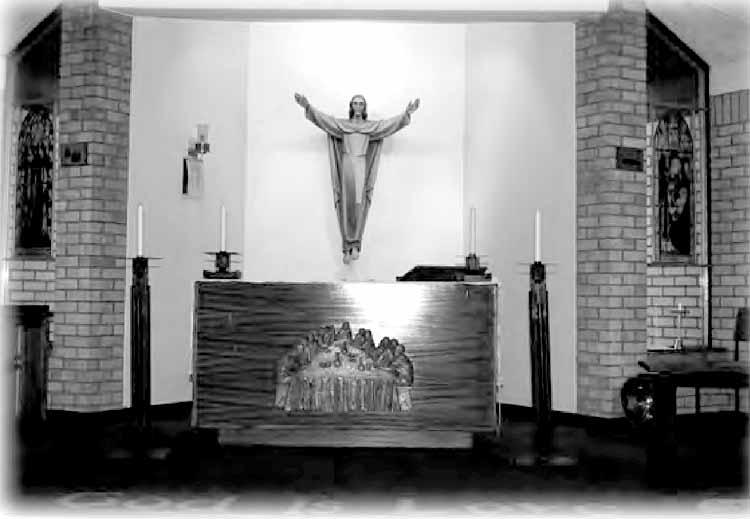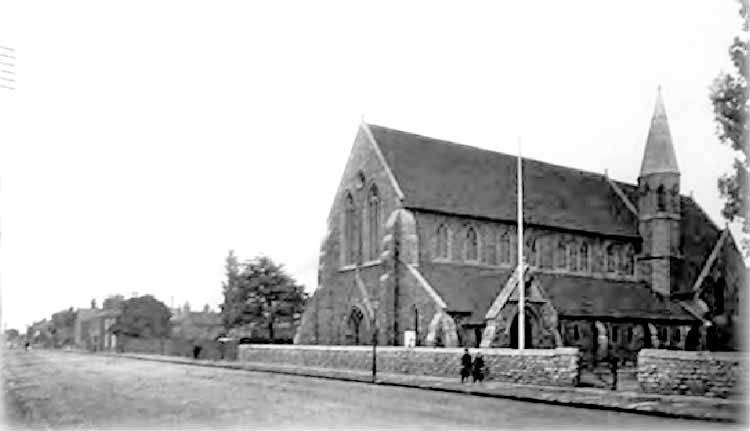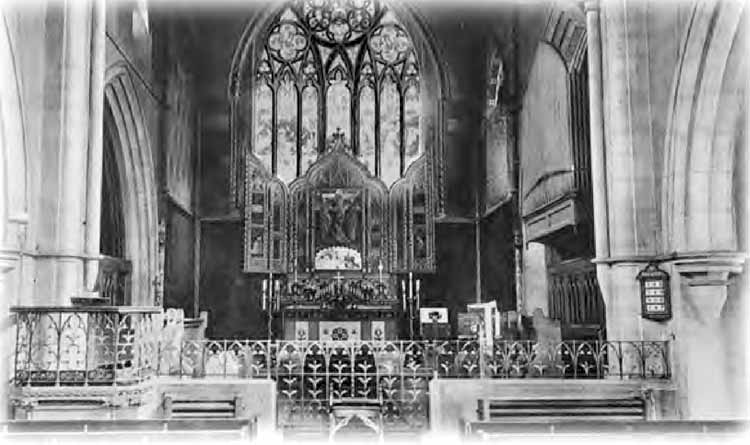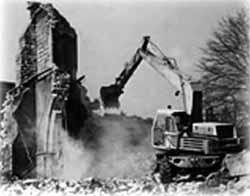Articles from the Thoroton Society Newsletter
A church for the present and of the past: St Leonard's, Newark
By Jeremy Lodge
As you travel into Newark along Lincoln Road from the A1/A46 roundabout you enter the usual increasing density of temples to consumerism. These initially include those monotheistic entities - McDonalds and the shrine to Colonel Sanders’ fried chicken and later Costa. Further along the polytheistic entities such as TK Maxx, Aldi, Marks and Spencer and B&Q abound.
However, before we reach even greater concentrations, we come upon St Leonard’s church. Designed by local council architects in the 1970s it is a product of its time - spacious, bright and airy with clean lines. The church can be opened out to fully integrate with the rest of this community building. Aesthetics and practicality dominating, it was designed with a short tower on its best-looking side facing the road. The altar is below and behind the tower, however as the aesthetics demand, the altar is on the west, not the east, side of the building.

Adjacent to the church-community centre combination is the Rectory. The church has a few nice, mainly modern features with just a few older relics.


It is worth dropping in if you are passing, especially if you have not previously visited a modern church building. Whilst you are there, look out for the ‘signature’ of Geoffrey Webb (stained glass artist and church furnishings designer) who created some of the glass work exhibited here.
Closer to Newark, one of the modern consumerist shrines should be noted. Not because there is anything special about Halfords but because, if only the staff and visitors knew, the bicycle technicians and salesmen stand roughly where the altar of the original St Leonard’s once stood. This church was built in 1873 and was demolished in 1978. Both this past and the modern versions were built to serve the population of this part of Newark as the conurbation continued to expand towards Lincoln.
Prior to 1837 St Mary Magdalene, on the edge of the Market Square, was the only Anglican Church in Newark. It accommodated some 1300, mainly in private pews with the poor sitting on benches in the aisles. In August 1837, Christ Church in Lombard Street was opened with 1/3rd of its pews ‘free’. In 1869, through the Will of John Tallents Fisher the sum of £1,000 towards the building of a church in Northgate was made available. The memorial to John Tallents Fisher is in the South Transept of St Mary Magdalene. One of the Trustees of the committee which was formed to raise further funds from the public and to build the church was former Newark MP, later to be Prime Minister, William Ewart Gladstone1.
In 1871 land was purchased for this purpose with the Church Hall being completed in the same year. Nottinghamshire and Lincolnshire Architects were invited to submit plans for the church at a cost not to exceed £3,000. The Newark Advertiser claimed that the location chosen is where an ancient church stood.
The Builder of April 1870 reported that enough money had been received to enable the Committee to proceed in accepting the offer from the Duke of Newcastle to sell any land that they required for their purpose in Northgate that was then occupied by gardens. Four months later, the same magazine reported that eight architects had submitted designs. The contract was awarded to Messrs Evans & Jolley. A correspondent who signed himself “One who had wasted Five Weeks in Preparation of this design” objected.
The ceremony of laying the Foundation Stone was held in Easter week, on Thursday 13th April 1871. The event ‘excited a good deal of interest in the town, and drew together a large concourse of spectators’.2 It commenced with a service at St Mary Magdalene followed by a procession along Kirk Gate and North Gate which was ‘densely thronged with spectators’. The final ceremony was the laying of mortar under a suspended stone ‘which was to form the support of the church on the north’ by Lady Charlotte Denison, Viscountess of Ossington, using a silver trowel. Prayers and speeches took place within the rising walls of the already partially built church. The local newspaper reported that ‘of the large number of spectators many were not within hearing distance of the ceremony’. This stone was part of the foundation for the large central arch of the church, in a cavity beneath which was placed a sealed bottle containing various items including photographs of the principal buildings of Newark, the Corporation Seal, copies of local and national newspapers, details of those present and a brief description as to how the church came about - this container is now lost. The church was completed in January 1873. The first wedding was held in July 1874. The Statement of Accounts of 20th July 1874 noted that the ‘church was commenced under the influence and guidance of a large and influential number of supporters in 1871 and that the services were well attended by the residents of the district, especially the poor for whom the church was chiefly built; the seats in the church being free.’ The purchase of the land and construction of the church and its surrounds has already cost £4,714 1s 6d; with an additional £1,100 required for the building fund and £533 15s 6d for the endowment fund. An appeal was made to the original subscribers (to increase their subscription) and to the residents of the neighbourhood and Newark for further aid.

St Leonard's Church, 1909.

The opened altar screen.
In its early days the old church was in the centre of its congregation, surrounded by densely packed, small homes, providing ‘traditional’ High Church colour and ceremonial. However, the population and associated housing estates had grown and extended outward (and ‘over the bridge’) from Newark, so the church was now at the edge of its congregation and it had become too costly to repair and run - one issue being heating the Church and the adjacent vicarage. In 1976 the Parish
Church Council passed a resolution to declare the church redundant and demolish it.3 The Newark Advertiser on 23rd July 1977 reported that the Church Commissioners had prepared a draft pastoral scheme for the redundancy and demolition and disposal of St Leonard’s Church, subject to the provision of a new place of worship in the Diocese of Southwell.
The new church was to be built in conjunction with the Bridge Community Centre. This would cost £40,000 of which £30,000 would be covered by the sale of the old church building and furnishings and a grant from the Diocese.
The people of the parish were asked to raise the remaining £10,000 which they did through various means, such as buying bricks at 10p each, collecting scrap and the sale of art.4 On 30th October 1978 The Advertiser reported that Churches of many denominations, including Roman Catholics and Methodists, from all over the country had been buying the original church furnishings.
On 6th November it was reported that the Reredos was bought by the Roman Catholic church of Our Lady and St Benedict at Wootton Wawen near Stratford-upon-Avon. The Organ was sold to the United Reform Church in Leicester and the Altar rails donated to Newark Parish Church. These sales raised £5,354.

The building was sold to Newark and Sherwood District Council for demolition.
Both incarnations of St Leonard’s were a product of their local communities, each reflecting their times. However, it is a significant sign of changing times that whilst the Victorian church was designed to hold some 600 worshippers, the present church was designed for 40 regular worshippers.
Modern photographs by the Author and old photographs courtesy National Civil Warr Centre & Newark Museum.
1 Hobson. H., St Leonard's Church, Newark. 1873 - 1978. (1978?)
2 Newark Advertiser 19th April 1871
3 Circular written by Andrew Read, undated - it looks like this was distributed at the ‘Jubilee Art Exhibition’ which was part of the money raising effort for the new church.
4 Elsewhere the figure of £15,000 was given for the church and the community centre seeking to raise £2,000 for furnishings.
< Previous